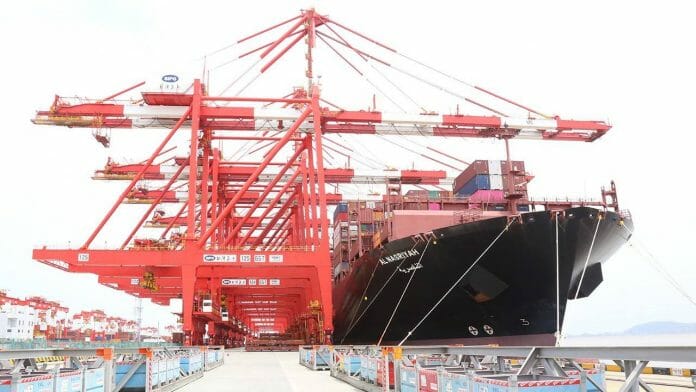The International Shipping Hubs Development Index Report (2023), the Xinhua – SPG Port Bulk Commodity Index Annual Operation Report (2023) and the RCEP Seaborne Trade Index Report (2023) were released recently.
These reports were released at the 2023 Qingdao Yellow River Basin Land-Sea Linkage High-Quality Development Seminar, according to a statement.
According to the participants, the port bulk commodity trade in the form of indices can be digitally presented to realise the efficient linkage between port shipping and bulk commodity trade and offer reliable guidance for the smooth operation of the global industrial chain and supply chain.
Following the “Xinhua-Baltic International Shipping Center Development Index”, the China Economic Information Service (CEIS) has introduced another global port and shipping assessment index, the International Shipping Hubs Development Index Report (2023).
This report evaluates the overall development of the world’s main shipping hubs and port clusters based on various categories and characteristics, with findings suggest that international trunk hubs, including Singapore Port, Shanghai Port, Ningbo Zhoushan Port, Rotterdam Port, and Qingdao Port, have attained a high level of development.
Meanwhile, CEIS and Shandong Port Group jointly released the Xinhua-SPG Port Bulk Commodity Index, which has been constantly upgraded and improved since its debut in 2021.
The index has formed a comprehensive system of price index, inventory index, and entry & exit index in which this year, the index system expanded the spot trading price index of sulphur and petroleum coke upon expansion.
The RCEP Seaborne Trade Index Report (2023) took the 14 member countries (except for Laos) of RCEP as the research objects and selected six major categories of cargo as the analysis objects to reflect the annual development trend of RCEP seaborne trade from two dimensions, including overall trade volume and seaborne trade volume.
According to the index report, the RCEP Seaborne Trade Index reached 101.4 in 2022, surpassing the 2019 baseline for two consecutive years. The RCEP seaborne trade volume has gained an increasingly larger global market share, especially in the container segment.
The report stated that the RCEP agreement, which will take full effect for the 15 signatories in the first half of 2023, would result in a more favourable seaborne trade prospect among RCEP members than the global trade outlook this year.









